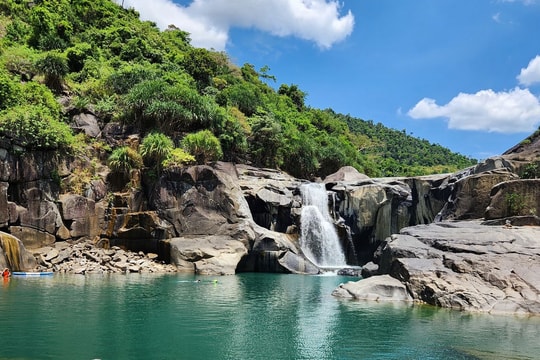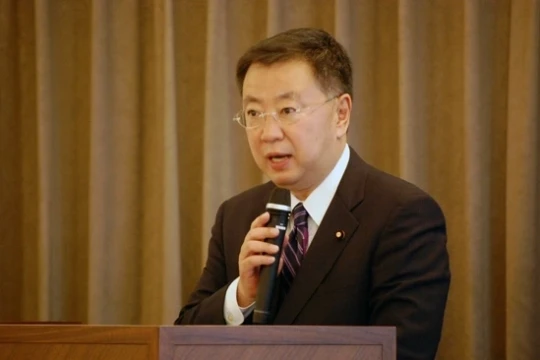Preventing drowning in children: Time to worry again!
(Baonghean.vn) - Drowning is one of the leading causes of death in children. Although local authorities at all levels as well as relevant sectors in Nghe An have made many efforts in recent times, the results have not been as expected.
Still "learning to swim on paper"
On the morning of June 21, not seeing his 1-year-old grandson anywhere, a man in Doi Cung hamlet, Ky Son commune, Tan Ky district panicked and went looking for him. In front of his house was a very deep pond, but it was not properly fenced. Suspecting something was wrong, he dived into the pond to look for him and discovered that his grandson had died. This is one of the latest drowning cases involving children in Nghe An.
According to the reporter, since the beginning of the year, 17 drowning incidents have occurred in Nghe An province, killing 20 children. In recent years, nearly every year in Nghe An province, more than 50 children have died from drowning.
Injuries and drowning of children and students are serious problems. Although there have been many efforts in implementing many prevention and control solutions, injuries and drowning accidents still occur every year, taking the lives of many children and students. One of the first reasons is that most of them do not know how to swim. According to statistics from the People's Committee of Nghe An province in 2022, the whole province has more than 870,000 children, however, only about 29,000 of them know how to swim. "To reduce heartbreaking drowning accidents, children must first know how to swim. Although in reality there are some cases of drowning despite knowing how to swim, this rate is very low. Therefore, we must invest in how to increase the rate of students who know how to swim safely" - Vice Chairman of the Provincial People's Committee Bui Dinh Long said in a meeting on drowning prevention and control not long ago.
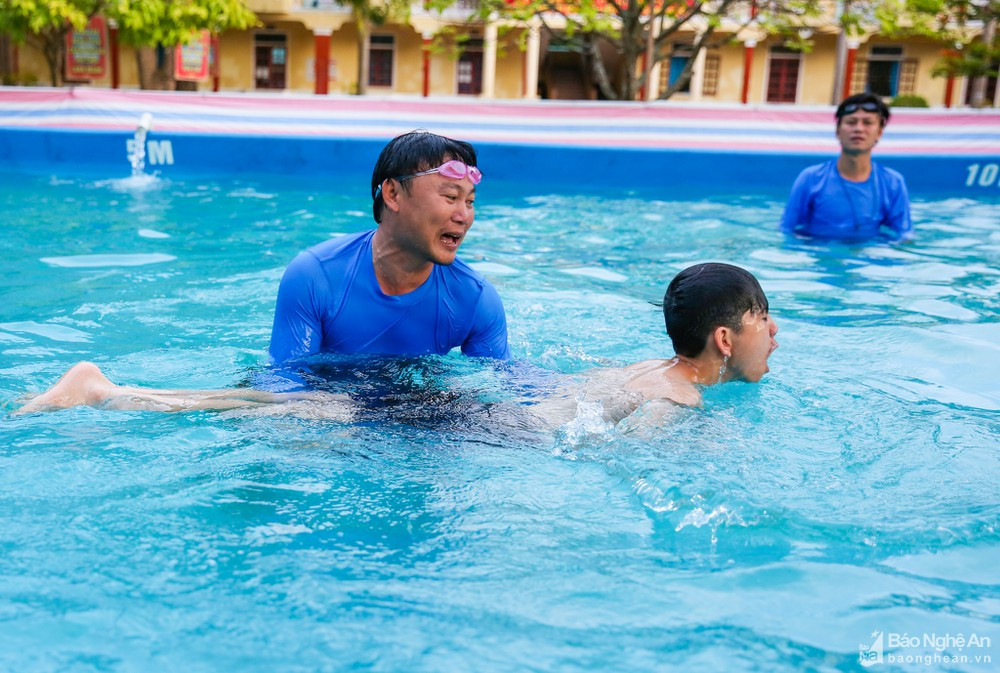
Most of the children who know how to swim are taught by their family and friends. The number of children who learn water safety skills and learn to swim at school is still limited. Meanwhile, the conditions of facilities, especially swimming pools, are still low compared to the requirements of tasks and social reality (the whole province has only 127 swimming pools). As for schools, the most recent statistics show that the whole province has only 56 swimming pools, of which only 8 are fixed swimming pools, the rest are mobile swimming pools.
It can be seen that, in addition to the lack of knowledge and skills to ensure safety and handle situations when swimming, one of the other reasons is that the management and education of children in preventing and fighting against accidents, injuries, and drowning in families is generally lax; in particular, some families are negligent, allowing tragic drownings to occur right in their own home. Many parents still neglect to provide their children with necessary skills such as learning to swim, learning escape skills, etc.
Meanwhile, the living environment has many potential risk factors that cause drowning accidents for children such as water basins, jars, water tanks, wells... without safety covers; rivers, lakes, streams, ponds... without fences and warning signs. On the other hand, construction works, digging and exploiting sand, soil, and rocks are widespread, and human unconsciousness... have left behind dangerous deep holes and ponds such as lime pits, pits for making bricks and tiles, pits for collecting sand, pits for watering crops... without fences, without people on duty to warn and prevent.
Along with that, the involvement of some local Party committees and authorities has not been really drastic: propaganda work has not been regular and effective; the assignment of people on duty and management in dangerous areas has not been specific and regular; conditions and means for rescue readiness have not been guaranteed; the implementation of swimming popularization has not been carried out simultaneously in the whole province; the assignment of tasks to prevent and combat drowning accidents among units still overlaps.
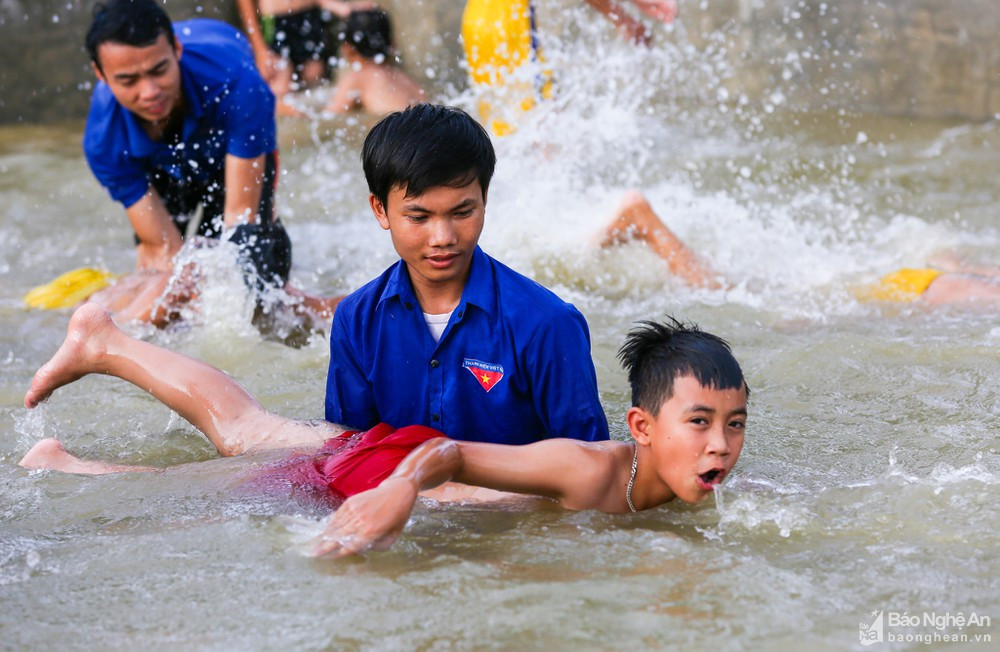
Need to promote the effectiveness of swimming pools soon
Being a locality located next to Lam River, almost every afternoon in Dai Dong Commune (Thanh Chuong) there are groups of children going to the river to swim. This is also a constant worry for many parents as well as schools and local authorities here.
“In the summer, almost every afternoon the river is crowded with children and students coming to cool off. Meanwhile, the Lam River flowing through the area is often exploited for sand, leaving dangerous underground whirlpools. That is our biggest worry,” said Mr. Nguyen Canh Thanh, Principal of Dai Dong Secondary School. Meanwhile, a permanent swimming pool has been invested in and built in the commune, but it has been abandoned for many years. Accordingly, the swimming pool was built in 2017, thanks to the call for donations from union members in the commune to serve as a playground and teach swimming to children. However, after operating for a short time, this swimming pool had to stop. According to the commune leaders, the reason was that this swimming pool had not been licensed to operate.
In general, swimming pools in the province are already lacking, and many are not used after construction or operate ineffectively. That is the current sad situation. In schools in Hoang Mai town, only Mai Hung Secondary School has invested in a swimming pool, but it also operates ineffectively. The reason is simply because the school lacks resources to operate as well as management and supervision mechanisms.
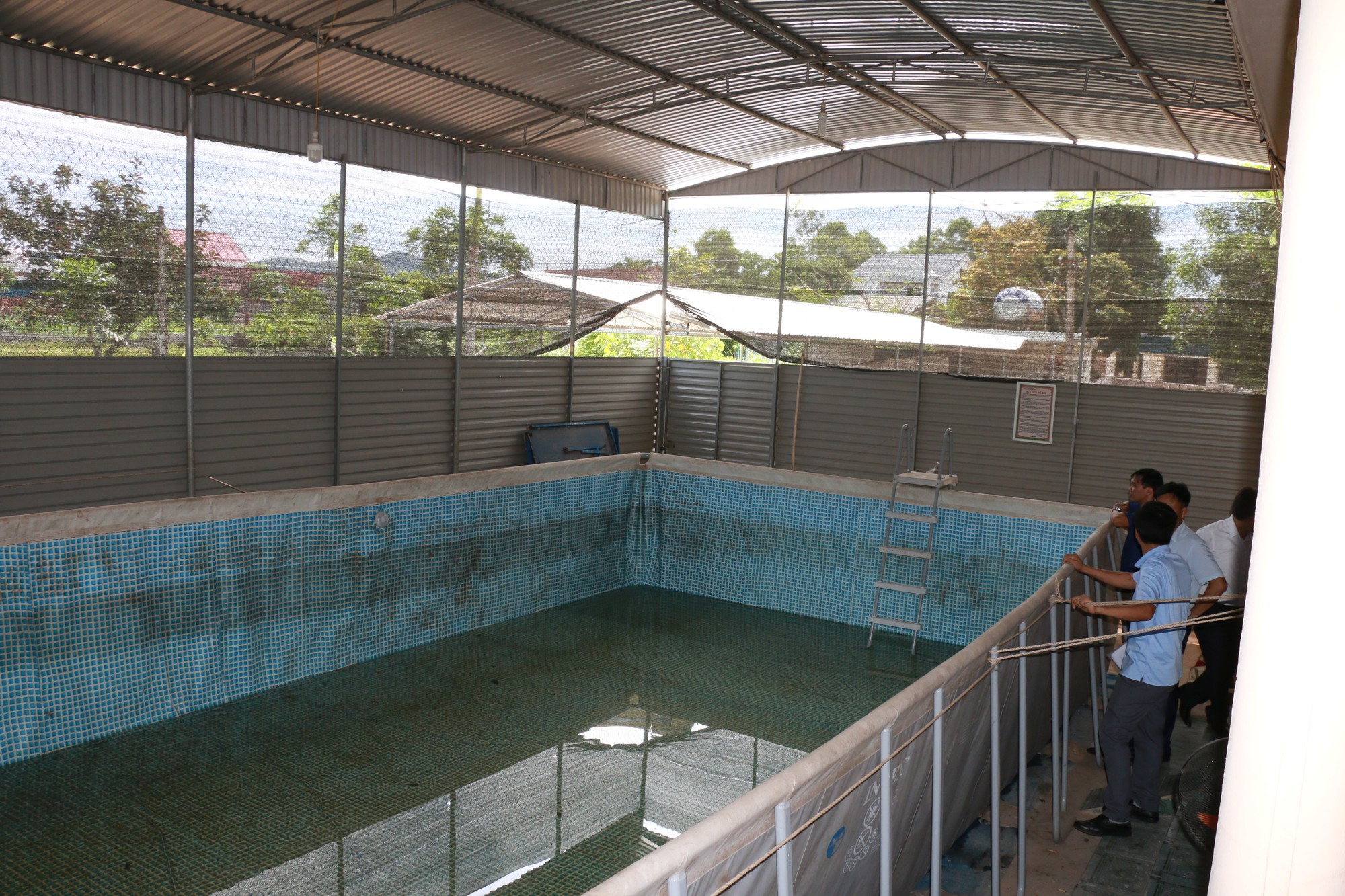
In Nghia Dan district, Nghia Hoi Secondary School was invested in and built a permanent swimming pool by the district 6 years ago. However, since then, this swimming pool has been operating at a low level, so the number of students learning to swim at the school is not much. According to the Principal of Nghia Hoi Secondary School - teacher Luong Huu Binh, every year after the year-end summary, the school only organizes swimming lessons for students for less than 1 month. However, due to many reasons, it is only "teaching one year, not the other". For example, this summer, because the teachers are busy, the school did not organize swimming lessons for students, so the swimming pool had to be left empty.
“There are many teachers in the school who know how to swim, but not everyone knows how to teach swimming. In addition, because there are no medical staff, each time swimming lessons have to be taught by medical staff from the station. Each swimming lesson, the teachers are only healthy enough to teach for about 1 hour. Therefore, each school year, if put into operation, they can only teach less than 50 students. Meanwhile, the school has more than 400 students,” teacher Luong Huu Binh added.
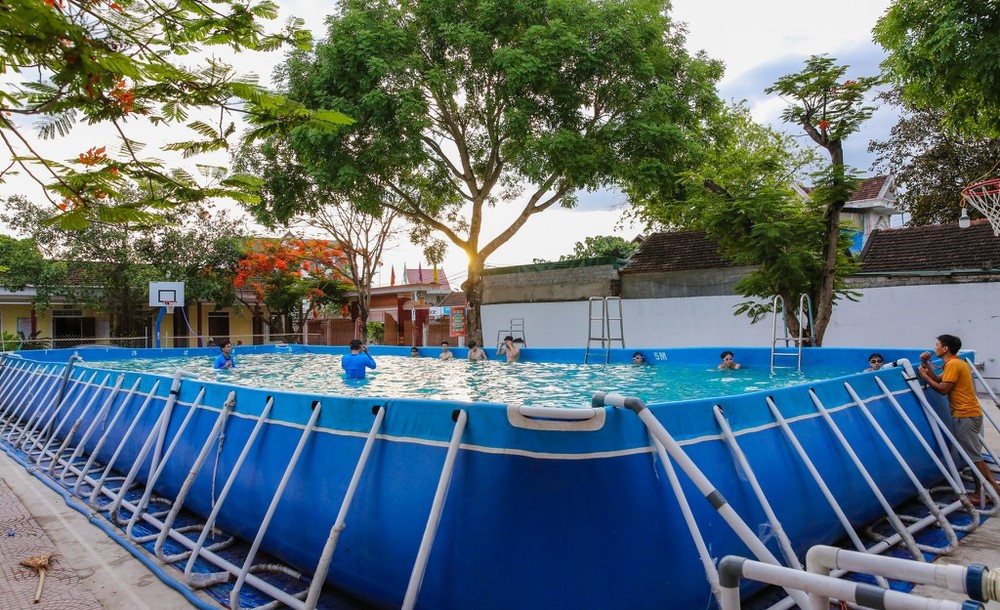
In order to teach swimming to students effectively, teacher Ho Tuan Anh - Principal of Quynh Phuong Secondary School (Hoang Mai Town) said that the Department of Education and Training needs to organize training sessions for teachers. "First, it is necessary to have instructions for schools that already have swimming pools to operate them effectively, and there must be a clear and specific operating mechanism. Second, the department needs to organize training sessions and then issue swimming teaching certificates to teachers. Because not everyone who knows how to swim can teach swimming. Due to the current situation of too few swimming pools in schools, after issuing certificates to teachers, in my opinion, the department needs to gather this team, connect with cultural centers to organize swimming lessons for children in the summer. Parents will pay a small fee to pay for the swimming pool rental," said teacher Ho Tuan Anh.


